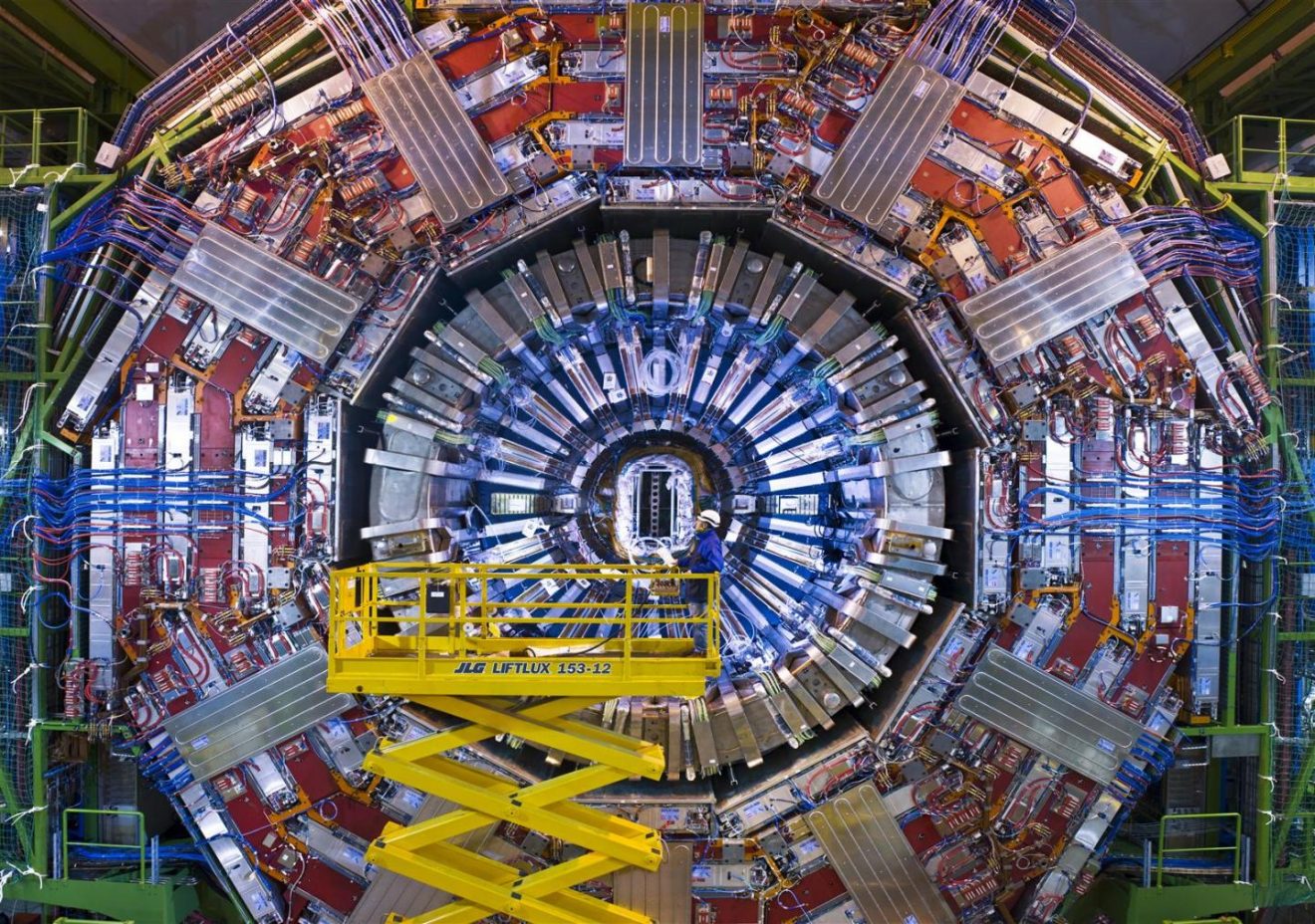Scientists at Large Hadron Collider Detect Important Higgs Decay
Florida Tech Physicists Part of Key Discovery;
Could Improve Search for Dark Matter
MELBOURNE, FLA. — Scientists involved in two major experiments at the Large Hadron Collider near Geneva, Switzerland, reported that the Higgs boson particle transforms into bottom quarks as it decays – an occurrence that was previously hypothesized but only now confirmed because ordinary background processes can easily mimic this decay.
This new discovery is a big step forward in the quest to understand how the Higgs enables fundamental particles to acquire mass.
After several years of refining their techniques and gradually incorporating more data, both the ATLAS and CMS experiments at the Collider finally saw evidence of the Higgs decaying to bottom quarks that exceeds the 5-sigma threshold of statistical significance typically required to claim a discovery. Both teams found their results were consistent with predictions based on the Standard Model.
“The more precisely we can nail down how the Higgs decays into all the known particles, the better our chances to catch any glimpse of a potential Higgs decay into a new, unknown particle, for example a dark matter particle,” said Marcus Hohlmann, a Florida Tech physicist who is working on the CMS, or Compact Muon Solenoid, experiment. “A direct measurement of the most common decay into bottom and anti-bottom quarks is very important in that context because you need to understand the decays that occur frequently as precisely as possible before you can have any hope to look for the rare decays. To use an overused metaphor, you need to understand the hay before you can look for the needle.”
To spot this process, the ATLAS and CMS collaborations each combined data from the first and second runs of the LHC and then applied complex analysis methods to the data.
“One of the key components of this analysis is the identification of bottom quarks, a process which uses sophisticated algorithms based on neural networks and deep learning methods,” said Francisco Yumiceva, a physicist at Florida Tech and a member of the CMS experiment who has played a key role in developing these tools.
Even though this decay is the most probable path, spotting it in the experimental data was not easy. Every proton-proton collision produces a splattering of subatomic by-products, one of the most common being bottom quarks. These bottom quarks then quickly decay into other kinds of particles, leaving behind vast showers of particles in the detectors. Tracing these particle showers back to two bottom quarks (and then figuring out which ones came from a Higgs boson) is extremely delicate and complicated work.
Higgs bosons are only produced in roughly one out of a billion LHC collisions and live only one-septillionth of a second before their energy is converted into a cascade of other particles. Because it’s impossible to see Higgs bosons directly, scientists use these secondary particles to study the Higgs’ properties. Since the Higgs boson was discovered in 2012, scientists have been able to identify only about 30 percent of all the predicted Higgs boson decays.
The Higgs field is theorized to interact with all massive particles in the Standard Model, the best theory scientists have to explain the behavior of subatomic particles. But many scientists suspect that the Higgs could also interact with massive particles outside the Standard Model, such as dark matter. By finding and mapping the Higgs bosons’ interactions with known particles, scientists can simultaneously probe for new phenomena.
The next step is to increase the precision of these measurements so that scientists can study this decay mode with a much greater resolution and explore what secrets the Higgs boson might be hiding.
Hohlmann is planning to search for Higgs boson decays into dark matter particles that in turn decay into pairs of muons far away from the original proton-proton collision. Muon detectors that are tailored for detecting such a “displaced-muon signature” are currently being built and tested at Florida Tech to upgrade the broader CMS experiment in Switzerland in 2019.
###





